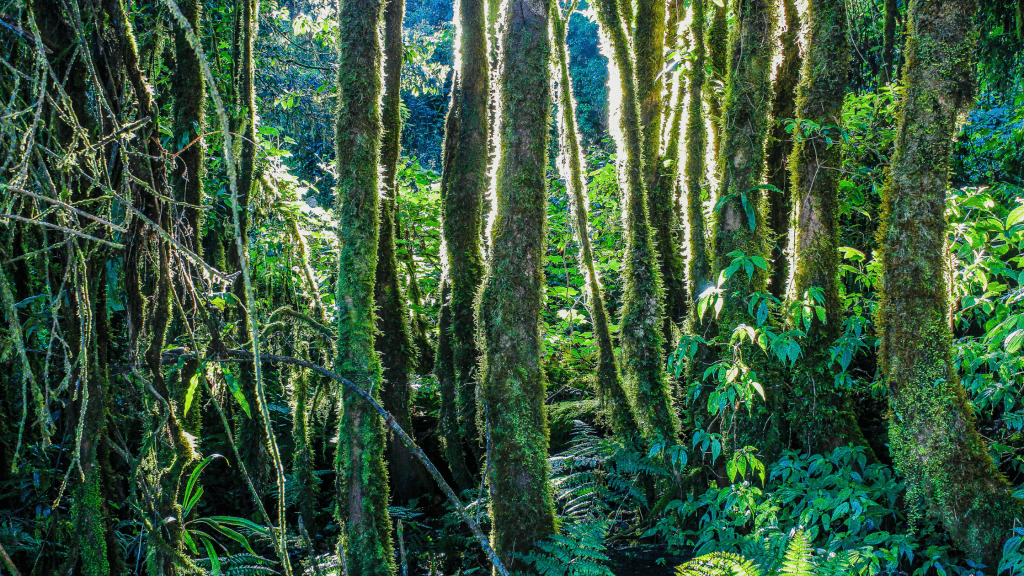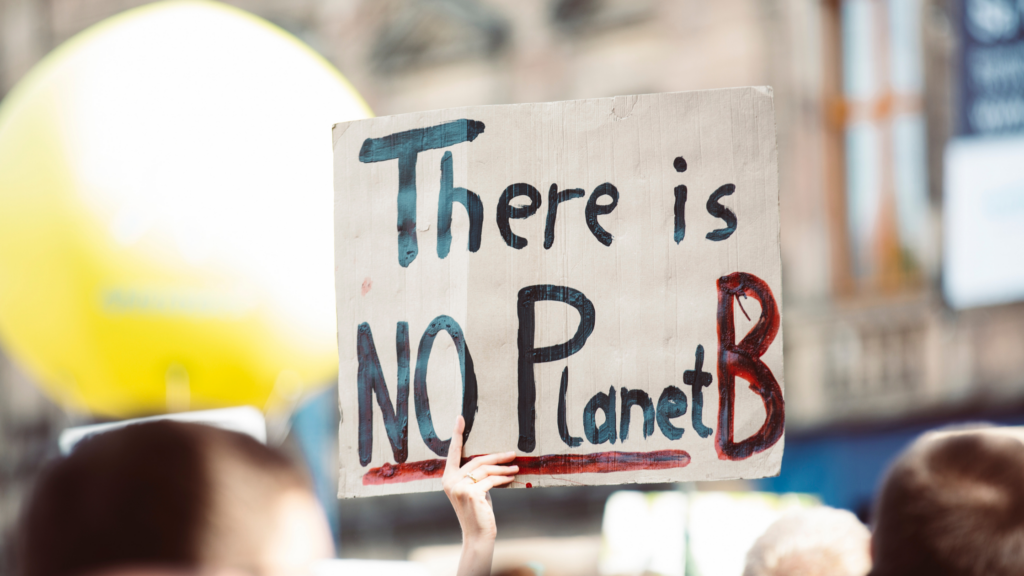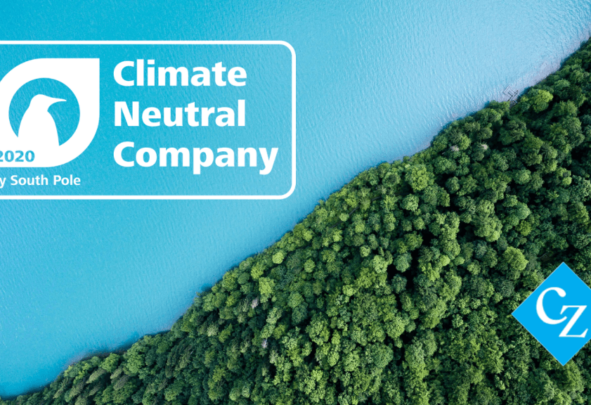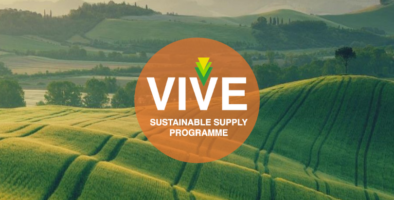This week, we have announced that for the first time Czarnikow has committed to carbon neutrality by offsetting excess carbon emissions from 2019. Working with South Pole, we have worked to understand how we can reduce our negative impact on the environment and act to make change. But what exactly is carbon offsetting?
Carbon Offsets: How it Works
First of all, it’s important to mention that carbon offsetting is not a solve-all solution. The first action that we all need to take to improve our impact on the planet is to act responsibly to reduce the amount of carbon we are letting into the atmosphere. This might be through actions such as reducing the amount of flights you take, consuming fewer animal products, or switching your office or home to a green energy provider.
While we work to reduce these emissions, there are some actions that are hard to avoid, particularly for a business. Certain meetings must be in person, which for a global company like Czarnikow often means international flights. Currently, the technology for carbon neutral planes is not readily available which means alternatives are sadly non-existent. Public transport, though arguably more environmentally friendly than commuting to work in your car, still releases harmful gases into our atmosphere. But you might still need to get to the office, even if it less this year than usual.
It is these unavoidable actions, left over after we have already taken action to reduce our carbon footprint, that are targeted with carbon offsetting. Through a thorough audit of an individual or organisation’s carbon impact and the purchasing of carbon credits, companies and individuals can support projects that improve green development, protect ecosystems, support communities and generally make change that will see a reduction of carbon in our atmosphere.

Through this process, the carbon footprint of an individual or company is ‘offset’. The idea is that by making positive action through carbon credit purchasing the carbon released through harmful activity is balanced out to zero.
South Pole has delivered emissions reductions and renewable energy through more than 700 projects in over 40 countries worldwide, working with organisations looking to support the growth of green power and improve lives. Their experience in this area and clear proof of impact made them an obvious choice for Czarnikow. We caught up with Marco Magini, Director of Projects & Portfolios, to find out more about how they work.
Q&A
Thanks for taking the time to speak with us Marco. Could you tell us about your role at South Pole?
South Pole has teams around the world – in 18 offices – working with different organisations, community groups or landowners. The role of my team is to ensure we are offering clients the best portfolio of carbon projects around the world. Whether it’s a project that involves nature, like growing forests or regenerative agriculture, or supporting communities with energy-efficient cookstoves, I connect the science on the ground to our client’s needs and the direction of the market. For example, in 2020 we launched the first regenerative agriculture projects of its kind in Europe after seeing increased demand for projects supporting soil health.
How do projects become certified “climate action” projects?
There are a lot of hoops to jump through! We are members of ICROA and our projects adhere only to internationally recognised standards, such as Gold Standard or Verra. Once we’ve identified a project that is reducing or removing GHG emissions, there is a long period of technical assessments to ensure we can accurately measure the carbon reductions and other co-benefits – this initial stage can take over 2 year! But it’s crucial. It gives buyers a guarantee that the project they are supporting is creating measurable, certified, real results and delivering long-term benefits. I always stress to clients when we are first explaining carbon projects, all the impacts are regularly audited, both from an external party and from the standard, and every single emissions reduction or “carbon credit” generated by a project is available to view on a public registry! You can’t get that level of transparency in many other areas!

How does carbon offsetting work to support these projects?
Carbon finance provides a vital revenue stream to the project, without which they wouldn’t be able to operate. It’s this “additional” component that makes climate action projects so important. These emissions reductions and contributions to the SDGs simply wouldn’t happen without companies, individuals and governments addressing their unavoidable emissions. So, it could be financing a wind farm, providing clean water to rural communities or planting trees, through carbon offsetting you are channeling finance into areas that lack the capacity for one reason or another to transition to a more sustainable future.
Are there particular Sustainable Development Goals (SDGs) that you are targeting at the moment, or do you look for a balance?
It almost goes without saying that all our projects support SDG 13, which focuses on climate action. But they all contribute to at least 2 other SDGs and some as many as 10! We always look at a project holistically and ask what are all the potential impacts for the wider community or landscape. Certified projects are one of the most transparent way companies can support sustainable development goals as everything is audited to UN standards.
South Pole does a lot more than carbon offsetting. Can you tell us a bit about your energy, consulting and finance services?
Carbon offsetting is one part of South Pole’s 5 step climate journey. For those taking the first tentative steps on climate action, to pioneering global leaders we cater for everything with a full suite of solutions. Whether its achieving RE100 with 100% renewable energy, cleaning up your supply chain or sourcing more sustainable investment funds, our message is always to turn whatever ambitions you have into action.

Where do you see the market in 5 years’ time?
Our hard work in the industry for almost 15 years means we’ve ridden the waves of climate action and ambition. And finally seeing climate action explode onto the world stage (big thanks to Greta and all the activists who are pushing for action!). Leading companies are voluntarily addressing their environmental impact , and consumers are using their purchasing power to choose climate conscious service providers.
We were invited by Mark Carney (Former Bank of England Governor) to be a member of his Taskforce on Scaling Voluntary Carbon Markets – combining corporate and government leaders driving climate change is incredibly motivating for the next 5 years. Together with our peers, we are excited to see the market scale. However this might not be fast enough given the magnitude of the current challenge. What we hope for is a serious, ambitious global compliance carbon market with high prices that ensure a fast and equitable transition to a sustainable economy.
Why Are We Acting Now?
Czarnikow has been committed to improving sustainability in its supply chains for many years, particularly since The VIVE Programme was launched in 2015. This year, we facilitated the first fully sustainable trade of sugar from producer to end user, made possible through VIVE and the trusted partners we have built over the years.
However, we recognise that only focusing on improving sustainability in our services does not cover our own actions. As the need for a green recovery becomes more and more apparent, we decided to take a step to match our activity externally with our own behaviour as an organisation. That’s why for the first time we completed a full audit of our organisation’s carbon footprint and with the help of South Pole, offset our emissions.
We will be continuing to do this in the coming years and will commit to improving our processes and practices to become more sustainable. In addition, we will be transparently reporting on our progress. We know we do not get everything right and can improve, but we are determined to try our best to become more responsible.
In our next blog we’ll dive deeper into the approach we’ve taken and how net zero could be achieved through a combination of approaches.
Author: Carys Wright



